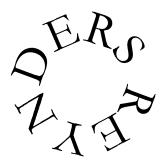

|
|
|
|
SUNU - Madou Dembele Version1 . . . 2 . . . DJ1 T t S s B . s . DJ2 S . . S s . T t DJ3 b . T t . . S . ^ Intro: Standard Break Break 1 . . . 2 . . . 3 . . . 4 . . . & . & . & . & . & . & . S . . . Where & = Bass/Slap at same time. End 1 . . . 2 . . . 3 . . . 4 . . . & . & . & . & . & . & . S . . . >> Where & = Bass/Slap at same time. @ . T t . T . T t . T . t . . T >> ? t . T t . . Ss. T . T . T t . . ? or: 1 . . 2 . . 3 . . 1 . . 2 . . 3 . . T t . T t . .Ss . . T . t . T t . . . John Feddersen from Modibo Keita 4/4 |: . . . * . . . | . . . * . . . :| _ _ _ _ _ _ (lead-in) S >> Djembe-1 S . O O S . . S S . O O S . . S _ _ _ _ _ (lead-in) O >> Djembe-2 O . S S . B S O O . S S . B S O Bell x . x x . x x . x . x x . x x . Kenkeni O . . M . . O . O . . M . . O . (lead-in) O >> Junjun O . . . . . . . . . . . . . . O >> (cont'd) O . . . . . . . . . . . O . . O >> O . . O O . O . O . O . O . . O Djembe/Junjun call-response lead-in: Djembe S S S S . S . S S . S . S . . O Junjun . . . . . . . . . . . . . . . O >> Djembe O . . O O . O . O . O . O . . (main rhythm) Junjun O . . O O . O . O . O . O . . (main rhythm) VARIATIONS: Two variations of the djembe 2 pattern, taught by Mamady Keita in Giessen, Germany, November 1997: |O . S S . . S O O . S S B . S O| Djembe 2 |O . S S . B S O O . S S B . S O| Djembe 2, variation 1 |O . S S . B S O O . S S B B S O| Djembe 2, variation 2 NAME OF RHYTHM: Sunu (Sounou, Sunun) COUNTRY: Northern Mali, bordering Mauretania (Donkili) Kayes region of Mali (Tambour Djembe, Karamba Diabate, Abdoul Doumbia) Border region between Guinea and Mali (Mamady Keita) OTHER NAMES: REGIONAL/ETHNIC GROUPS: Kagooro, descendants of the Bamana (Donkili) Soninke (Tambour Djembe, Karamba Diabate) Kakolo and Maraka (Abdoul Doumbia) Bambara people of Mali (Mark Sunkett) PURPOSE/BACKGROUND: This very popular rhythm is believed to date back to the pre-colonial era. At that time, in the village of Sagabari, there was a pretty young girl named Sunu Mamady (her father had the same name). Everyone loved her, and her qualities as a dancer were greatly appreciated. No festivity could take place without her participation. This rhythm was created in her honor by a djembefola troupe in her village. The dance is played to celebrate good harvests. It is a moment for young girls to demonstrate their grace and beauty, sometimes even their provocativeness, and for young boys, especially in the Kaarta circle, to demonstrate their strength and vigor and show their acrobatic prowess. (Le Tambour Djembe) This is a folk rhythm of welcome that is played on traditional feast days such as Ramadan, Tabaseki (the Sheep festival), marriages, baptisms, etc. (Mamady Keita) A popular celebration rhythm. (Karamba Diabate, Mandiani Drum & Dance)) A dance of rejoicing performed by the men and women of Karta after harvest. (Mamadou Kante) RELATED RHYTHMS: SONG LYRICS: Meyaee, Meyaee, Meyaee sunubeniima Meyaee, Meyaee, Meyaee sunubeniima Meyaee, Meyaee,kaluyafo londo Kaluyafo Kaluye n'dyarabi fee Konakry Meyaee, Meyaee, Meyaee sunu beni maa "The Sunu dance suits you well, Meyaee (a girl's name). Say hello to my friends in Conakry for me." (Mamady Keita)
|